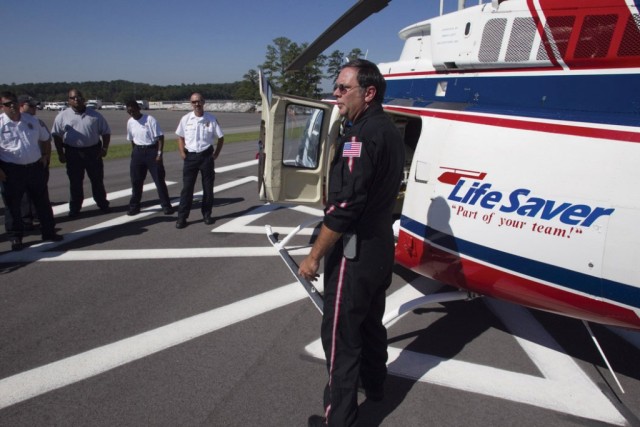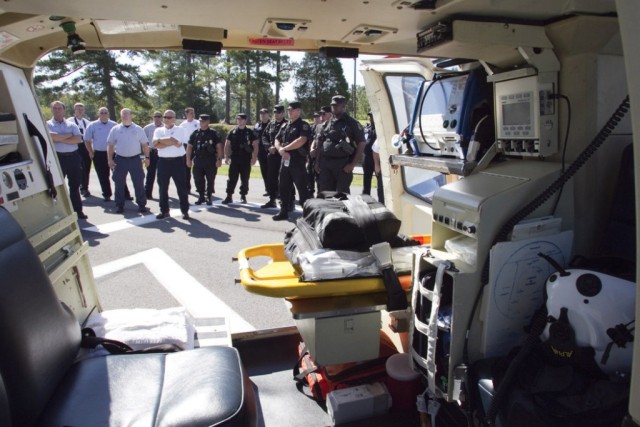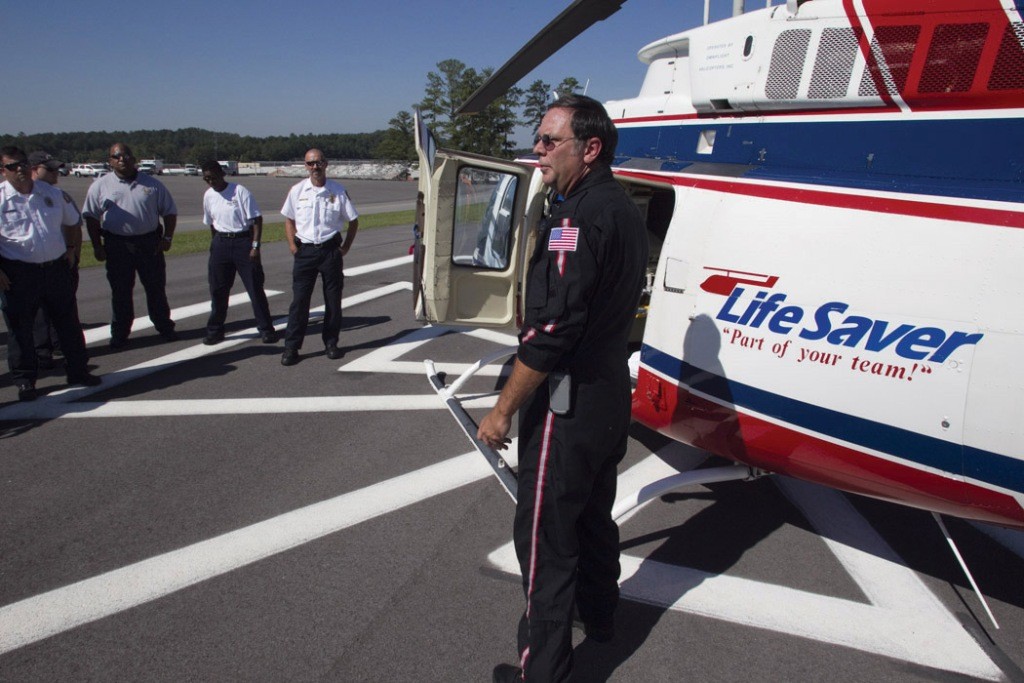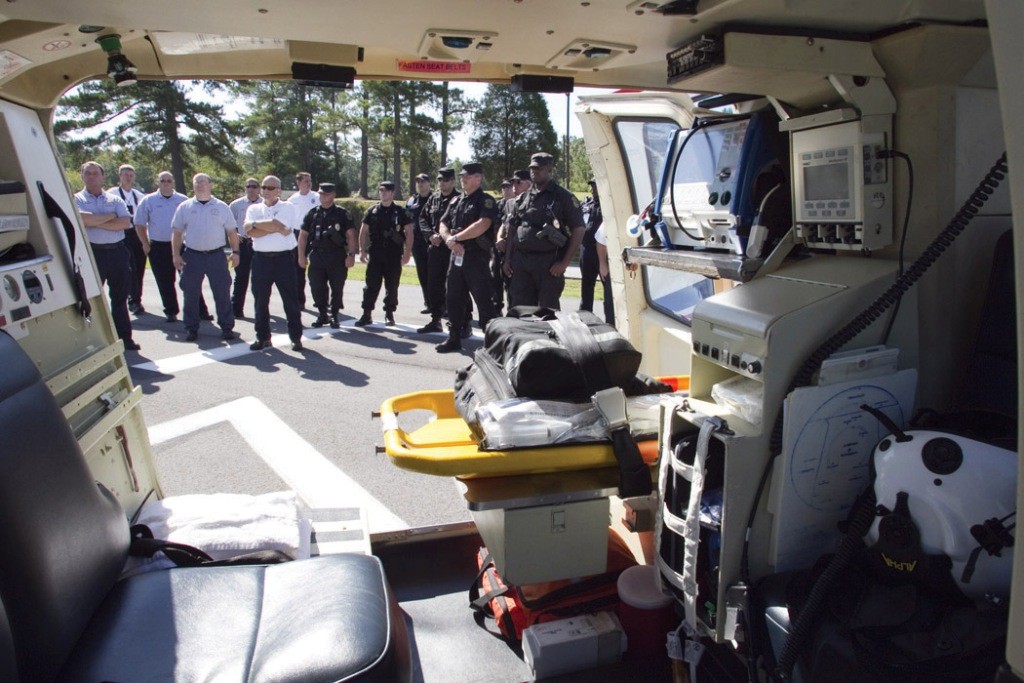ANNISTON ARMY DEPOT, Ala. - Every two years paramedics are required to conduct 48 hours of refresher training to keep their state and national licenses current. They are required to address specific areas of study.
For paramedics on Anniston Army Depot, this year's focus was on the Alabama Trauma System. With the possibility of a traumatic incident occurring on depot, firefighters and paramedics covered different areas of the trauma system as well as trauma emergencies. These classes included updating state protocols and rules, contacting Life Saver for possible air evacuation of a patient and the proper procedure for ensuring trauma patients are entered into the Trauma Control Center.
Classes were conducted in a week-long classroom setting. A variety of guest instructors from the TCC located in Birmingham, East Alabama Emergency Medical Services located in Lincoln, and Life Saver Air Transport of Gadsden were involved with the training.
Life Saver Emergency Air Transport provides key support for paramedics on and off the installation if the patient needs rapid transport to a Level 1 Trauma Center. A Level 1 Trauma Center simply means the emergency room has the capability to handle any type of life-threatening trauma injuries. Depot Fire Department personnel are trained on the specifics of what identifies someone as a level 1 transport.
Life Saver landed on the installation and provided a static display. The flight crew consisted of the pilot, one flight nurse and one flight paramedic. Depot Directorate of Emergency Services provided security to close off all traffic and DES Fire provided radio communication for the landing.
After landing, the crew from Life Saver gave an overview for patient requirements, restrictions, what kind of weather they are approved to fly in and the safety areas around the helicopter. After the overview, DES Fire and Security were able to get a closer look of the helicopter by actually sitting in and seeing how each member performs their task. One DES employee was actually packaged as a patient to show the ease of loading someone into the patient's compartment.
"This refresher training enabled us to keep our personnel on site and ready to respond to emergencies on the installation as well as saving money that would have normally been spent for travel and overtime to backfill behind the people sent for this training," said James Slick, assistant fire chief. "It also allowed for a larger number of our personnel to receive the training at one time."




Social Sharing